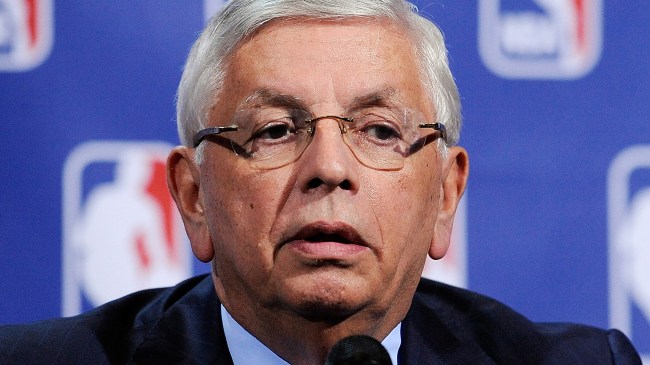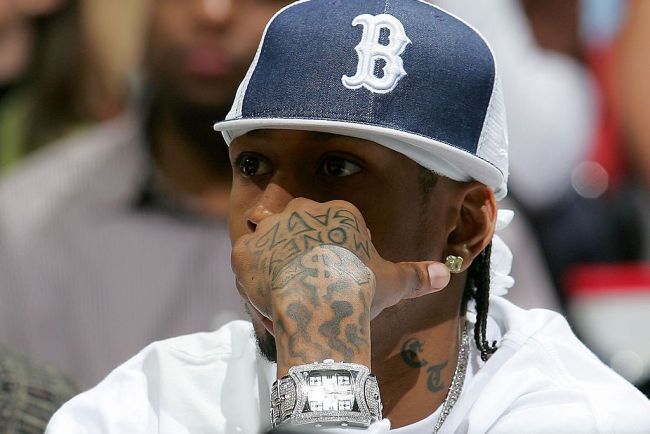
Getty Image
November 19, 2004 was a dark day in NBA history thanks to what unfolded when the Pacers and the Pistons faced off in Detroit that evening for the game that spawned the incident dubbed “The Malice at the Palace.”
The league suddenly had a debilitating headache thanks to the chaos that unfolded after tensions started to boil when Ben Wallace took exception to Ron Artest’s hard foul. What started as a minor scuffle on the court eventually turned into a massive melee that spilled into the stands as multiple players attempted to chase down and throw hands with fans.
The NBA subsequently found itself facing a major optics issue. David Stern wasted no time handing out a number of lengthy suspensions and hefty fines, but that discipline only did so much to help the league redeem itself in the wake of the deluge of criticism it was subjected to thanks to what went down on that fateful night.
It took less than a year for the commissioner to take a pretty major step in an attempt to rehabilitate its image when the NBA announced its intention to institute the dress code that went into effect on November 1, 2005. While that move was met with plenty of resistance at the time, it not only had the desired effect but inadvertently became an incredibly influential policy that ushered in a new era in the league that’s arguably led the sports world on the fashion front ever since.
How exactly did that happen? Well, let’s take a look.
The introduction of (and backlash to) the NBA dress code

Getty Image
It’s basically impossible to talk about the NBA’s decision to implement a dress code without discussing race.
The policy required players to wear “business or conservative attire” when taking part in team activities, and while there’s nothing particularly controversial about that aspect, the same can’t be said for the list of items they were specifically banned from wearing—including jewelry, t-shirts, durags, jeans, Timberland boots, and other types of apparel that were inextricably linked to the hip-hop culture that was popular at the time (especially in a league where the majority of players were Black).
Stern was undoubtedly attempting to appease the critics who had a slightly problematic tendency to refer to players as “thugs,” “gangsters,” and other derogatory (and coded) terms. However, his decision to do so at the expense of the players with a fondness for flashier styles did not sit well with many guys who felt they were being unfairly targeted.
After the dress code was announced, Jason Richardson called the ban on chains “kind of racist,” and Stephen Jackson echoed that sentiment by saying multiple aspects of the dress code were “definitely a racial statement.”
At first, a number of players openly defied the policy (and were hit with a fine as a result), but it didn’t take long for a new era to arrive as more guys began to work within the rules they were expected to abide by gravitating to designer labels and formal outfits that still allowed them to express themselves.
The unintended consequences of the NBA dress code
You could argue baggy clothes and oversized jewelry were already falling out of fashion by the time the NBA instituted the dress code. However, its introduction certainly gave players some extra encouragement to explore the sartorial options that were starting to become more popular at the time.
In the years that followed, more and more players routinely started to make some fairly bold choices while still subscribing to the mandated “business casual” aesthetic. Many of them started to use the tunnels leading in and out of arenas as makeshift runways to show off their latest ‘fit, and the likes of LeBron James and Kyle Kuzma have repeatedly turned heads with some of their particularly, um, ambitious jawns.
The NBA has continued to tweak its dress code over the years (Adam Silver has placed less of an emphasis on formality since replacing Stern as commissioner in 2014), and while players can get away with much more than they may have been able to under the previous regime, the fact that so many of them still opt to go all out proves it left a fairly lasting legacy.